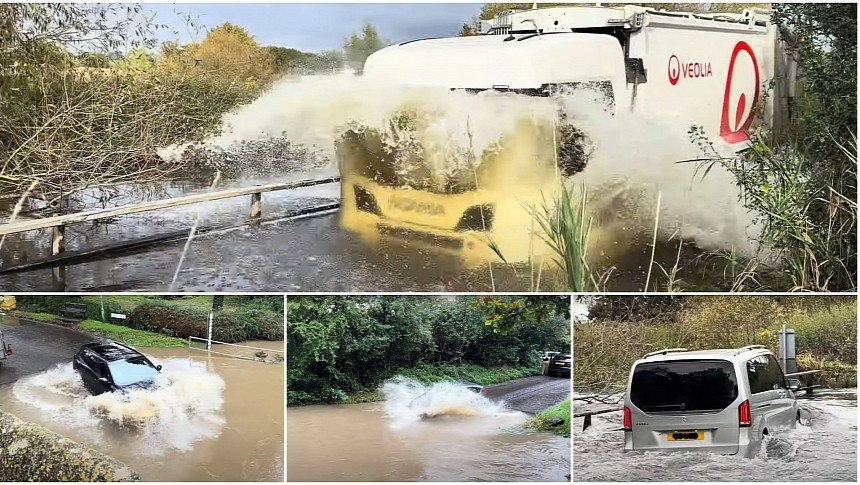There's a good reason we are taught about the dangers of driving on wet roads – water isn't a car's friend. Aquaplaning can happen at any moment if the person behind the steering wheel does not adjust their speed. But while we cannot blame the driver completely when the rain is playing games, it's their fault when there's a large body of water in front of them, and they gun for it like physics does not matter at all. All this is a learning opportunity for everyone.
If you drive often on high-speed roads, there's a high chance you're knowledgeable about aquaplaning. This phenomenon is dangerous and can lead to nasty crashes.
Fortunately, there's a simple solution: the best thing you can do to avoid losing contact with the surface your car's tires are trying to grip onto is lowering your speed and making sure your lighting system works appropriately so other drivers can spot you when the torrential rain is affecting visibility.
But while aquaplaning is something only good drivers are aware of, a large body of water (like a temporary mini-lake, so to say) is a thing anyone can spot from a mile away. It's really not that complicated to see a submerged portion of the road and think about tackling it right. Sadly, however, some drivers appear to believe their vehicles are submarines or machines that can briefly act as boats.
Case in point: some unlucky car owners and professional drivers from the UK (where it rains a lot and people who want to get behind the steering wheel must complete obligatory training and pass a theory and practical test) who forgot they had to adjust their speed and not force their engines to compress water.
Fortunately, for some of them, things didn't go completely south. Cars are smart enough nowadays. Some will cut off the power before the mechanical beating heart attempts to play with H2O and destroys its cylinders. Dealing with a hydrolocked engine is not something you need in this economy.
But there were some cases where drivers needed to be towed out of the flooded ford. The video below shows that no matter the type of vehicle you drive, paying attention to road conditions and being mindful of large bodies of water is paramount.
Some drivers going through Essex and Bedfordshire (UK cities) surely had to provide some explanations to their employers after dealing with water crossings.
If you ever find yourself in such a situation, remember always to assess if the depth is safe, enter the ford at a low speed, keep acceleration safe and steady (don't go too fast or too slow), and you should be all dandy!
Now, learn from these people's misfortune and be a wiser driver!
Fortunately, there's a simple solution: the best thing you can do to avoid losing contact with the surface your car's tires are trying to grip onto is lowering your speed and making sure your lighting system works appropriately so other drivers can spot you when the torrential rain is affecting visibility.
But while aquaplaning is something only good drivers are aware of, a large body of water (like a temporary mini-lake, so to say) is a thing anyone can spot from a mile away. It's really not that complicated to see a submerged portion of the road and think about tackling it right. Sadly, however, some drivers appear to believe their vehicles are submarines or machines that can briefly act as boats.
Case in point: some unlucky car owners and professional drivers from the UK (where it rains a lot and people who want to get behind the steering wheel must complete obligatory training and pass a theory and practical test) who forgot they had to adjust their speed and not force their engines to compress water.
Fortunately, for some of them, things didn't go completely south. Cars are smart enough nowadays. Some will cut off the power before the mechanical beating heart attempts to play with H2O and destroys its cylinders. Dealing with a hydrolocked engine is not something you need in this economy.
But there were some cases where drivers needed to be towed out of the flooded ford. The video below shows that no matter the type of vehicle you drive, paying attention to road conditions and being mindful of large bodies of water is paramount.
Some drivers going through Essex and Bedfordshire (UK cities) surely had to provide some explanations to their employers after dealing with water crossings.
If you ever find yourself in such a situation, remember always to assess if the depth is safe, enter the ford at a low speed, keep acceleration safe and steady (don't go too fast or too slow), and you should be all dandy!
Now, learn from these people's misfortune and be a wiser driver!













